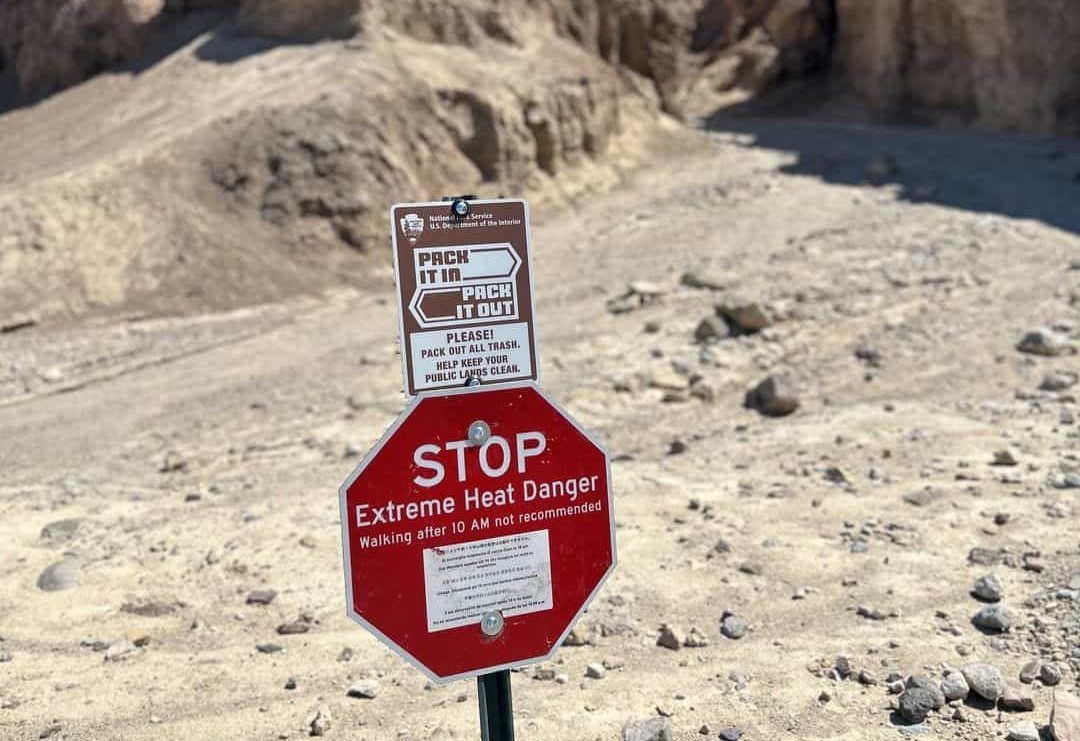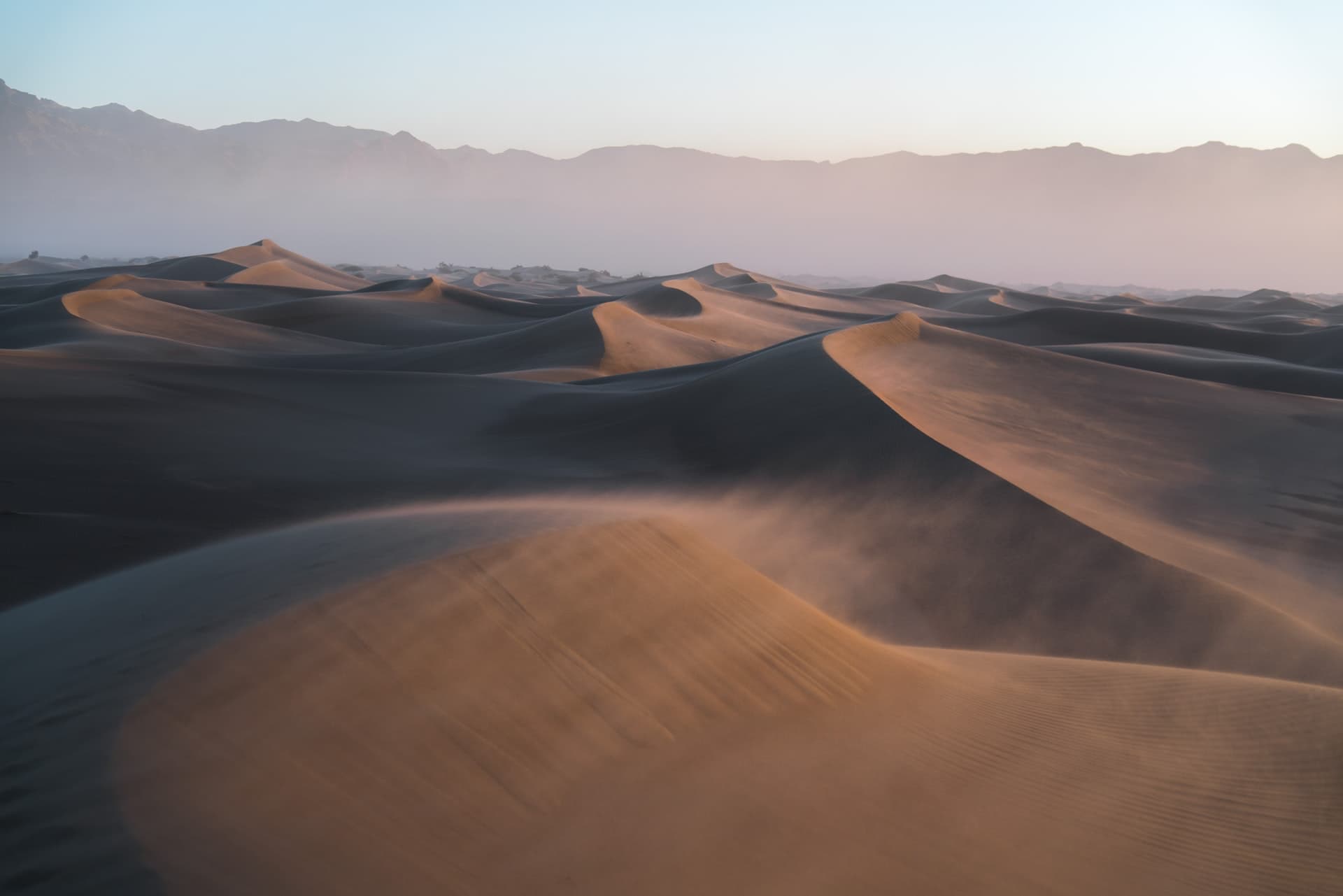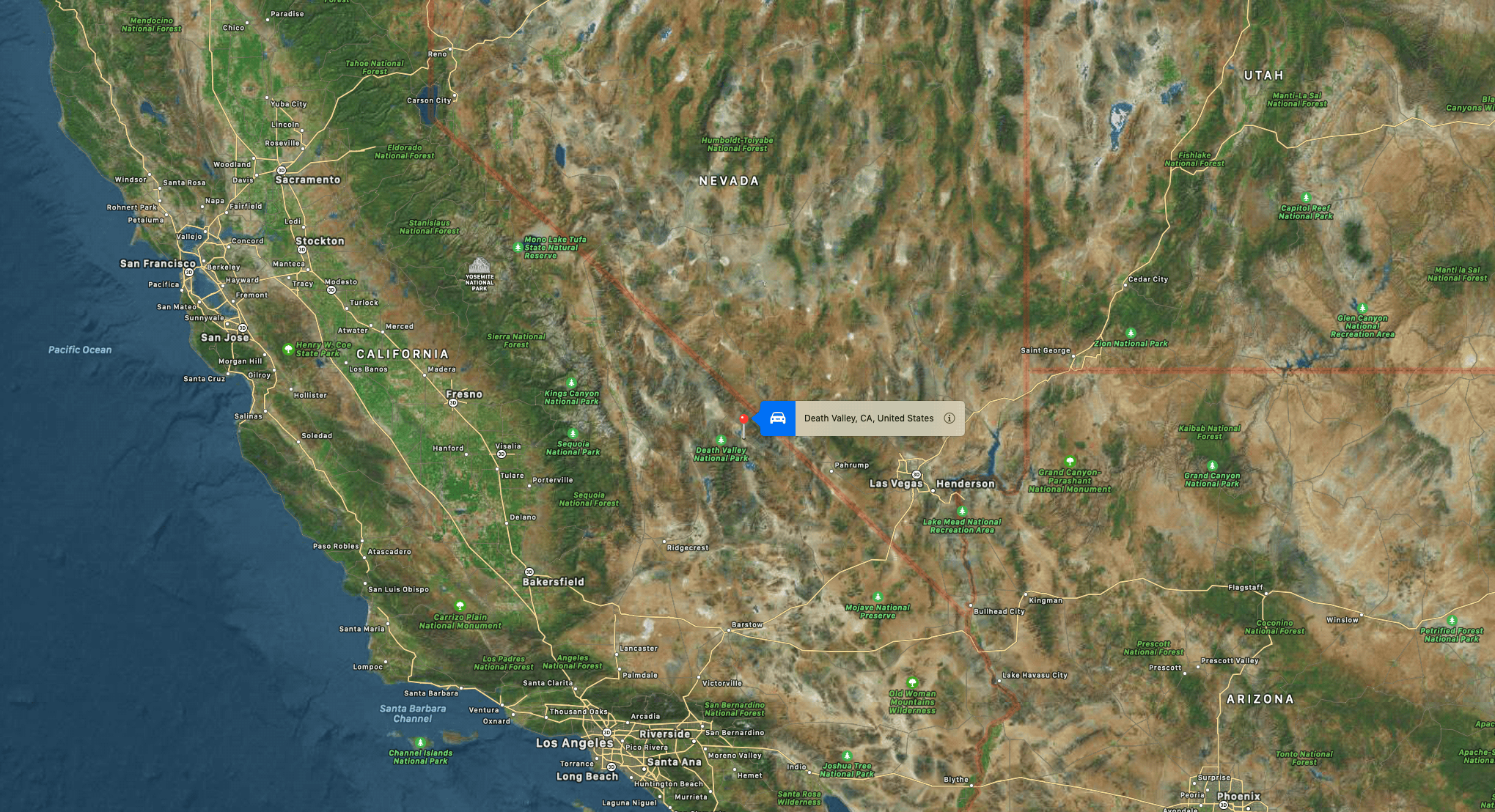
A man died at a trailhead in Death Valley National Park, CA, on Tuesday afternoon as temperatures reached 121°F.
The 71-year-old man from the Los Angeles area collapsed outside the restroom at Golden Canyon. National Park Service officials believe he had likely just been hiking the popular trail. He was wearing a sun hat and hiking clothes, and carried a backpack. His car was in the parking lot.
Other park visitors noticed the man and were able to use their cell phone to call 911 for assistance at 3:40 pm. National Park Service and Inyo County Sheriff’s Office responded. Mercy Air’s helicopter was not able to respond due to the high temperature. Park rangers arrived at 3:47. They did CPR and used an automated external defibrillator (AED) but were not able to save the man.
The Inyo County Coroner’s Office has not yet determined the man’s cause of death. However, park rangers suspect heat was a factor. The official temperature at nearby Furnace Creek was 121°F around the time of his death. Actual temperatures inside Golden Canyon were likely much higher, due to canyon walls radiating the sun’s heat.
Park rangers encourage people to visit Death Valley safely in the summer by sightseeing short distances from their air-conditioned cars or hiking in the park’s cooler mountains. They do not recommend hiking at low elevations after 10:00 am.
This is possibly the second heat-related fatality in Death Valley this summer. A 65-year-old man died on July 3.
According to the National Weather Service, Death Valley has experienced 28 days of temperatures in excess of 110 degrees this year. Heat stroke sets in when the body’s core temperature rises above 104 degrees. Classic signs of heat stroke include throbbing headache; dizziness and light-headedness; lack of sweating despite the heat; red, hot, and dry skin; muscle weakness or cramps; nausea and vomiting; rapid heartbeat (either strong or weak); rapid, shallow breathing; behavioral changes such as confusion, disorientation, or staggering; seizures; and unconsciousness. Seek immediate medical help if heat stroke is suspected.

Death Valley National Park, located in California, is a unique and mesmerizing landscape that captivates visitors with its extreme conditions and stunning natural features. Spanning over 3.4 million acres, it is the largest national park in the contiguous United States. The park’s name may evoke thoughts of a barren and lifeless desert, but it is home to a surprising array of diverse ecosystems and remarkable geological formations.
One of the park’s most iconic features is the Badwater Basin, the lowest point in North America, sitting at 282 feet below sea level. This vast salt flat stretches for miles, creating a surreal and otherworldly scenery. Visitors can walk across the salt flats, marveling at the intricate salt crystal formations and the unique patterns they create on the ground.
In addition to its low elevation, Death Valley National Park boasts the highest temperature ever recorded on Earth, reaching a scorching 134 degrees Fahrenheit (56.7 degrees Celsius) in 1913. This extreme heat, combined with the park’s arid conditions, makes survival a challenge for many organisms. However, the park is home to a surprising variety of plant and animal life that have adapted to these harsh conditions. Desert wildflowers bloom after rare rainfall, transforming the arid landscape into a vibrant and colorful display. Visitors may also encounter bighorn sheep, coyotes, roadrunners, and other desert-dwelling species during their explorations.
